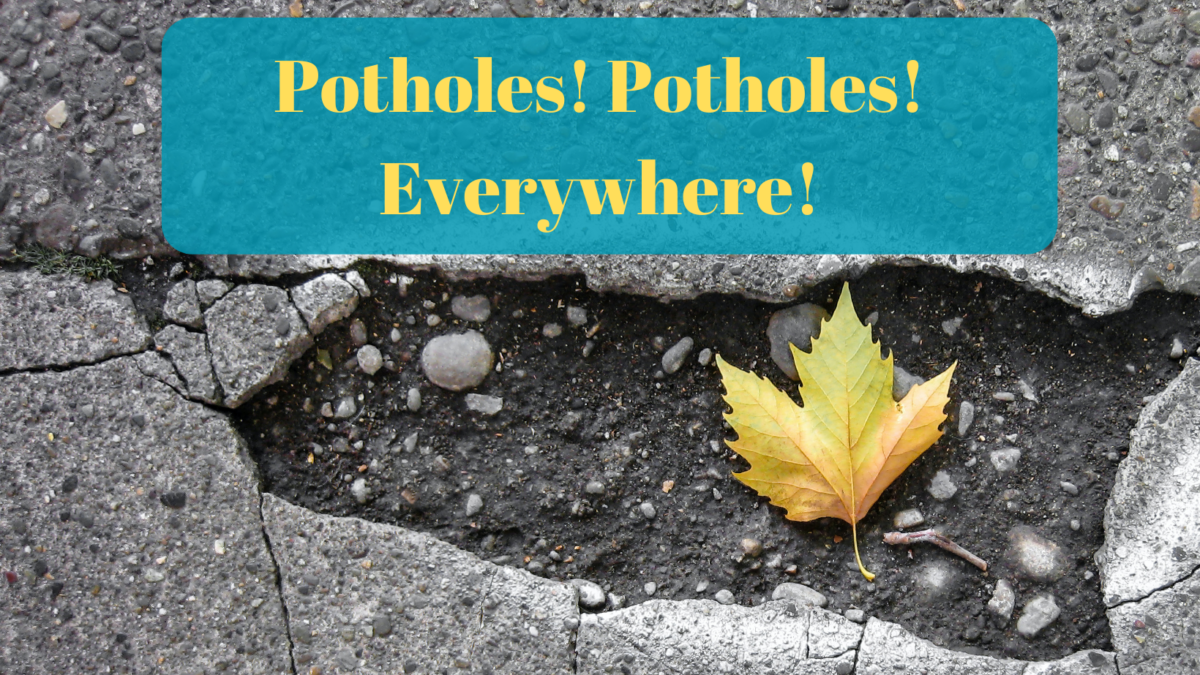There’s an Increase in Potholes
With the climate changing, a change is occurring you might not have considered. Yearly average temperatures are on the rise, but so are the number of potholes. We all know that spring and fall are the times of year when temperatures frequently change from high to low. This is called a freeze-thaw cycle, and with the changing climate, they’re happening earlier and more frequently. All this results in an increase in potholes.
How Do Freeze-Thaw Cycles Result in an Increase in Potholes?
If we want to understand how freeze-thaw cycles affect our pavement, we need to understand how potholes are formed. As you can see in the drawings below, rain or snow seep into the pavement through small cracks.
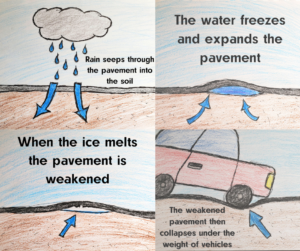
When it’s cold, the water freezes and expands, creating a cavity between the pavement and the soil. When the water eventually melts, the pavement becomes compromised due to the now hollow cavity. When vehicles drive over this compromised section of pavement, the pavement cracks and crumbles and a pothole is formed.
What Can I Do About This Increase in Potholes?
Well, the first thing to do is to patch it up. Our team of experts at Dare can come out to your place and do this in a jiffy, like you see in the picture below.
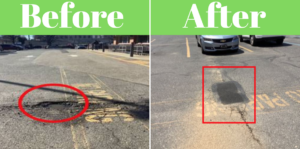
Another thing to worry about are sink holes. These can cause much bigger problems than just an ordinary pothole, so make sure to call Dare and get them taken care of immediately.
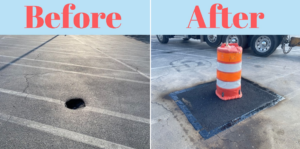
How Can I Prevent an Increase in Potholes?
Being proactive and preventing potholes from forming not only helps protect motorists but it will save you money in the long run. There are many ways to prevent potholes such as crack sealing, fog sealing, chip sealing, and microsurfacing.
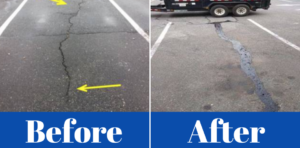
The size of your property, the climate, traffic volume, and the existing damage will determine what method you use. What matters is that you fill in pavement cracks before it’s too late. By being proactive and filling in pavement cracks, you can avoid the nuisance of potholes.
When’s the Best Time of Year for this Type of Work?
Right now! The weather’s now warm enough for our crew to get out there and maintain your pavement. In order to set properly, sealcoating must only be done when the temperature has been above 50 degrees for at least 24 hours and when there is no rain predicted for the following 24 hours.
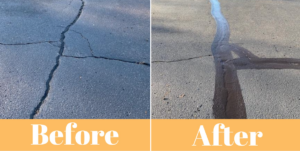
So it can’t be too cold, and it can’t be wet. And it’s good to have the area blocked off from any traffic for at least 24 hours after it’s applied. The best practice is to reapply any sealcoating every two to three years.
Let’s Get Started!
Spring is here and the weather is perfect for repairing potholes, as well as doing the work to prevent an increase in potholes on your property. Click the link below and get your quote today!
Get My Quote!
*Featured images courtesy of Ian Taylor.


